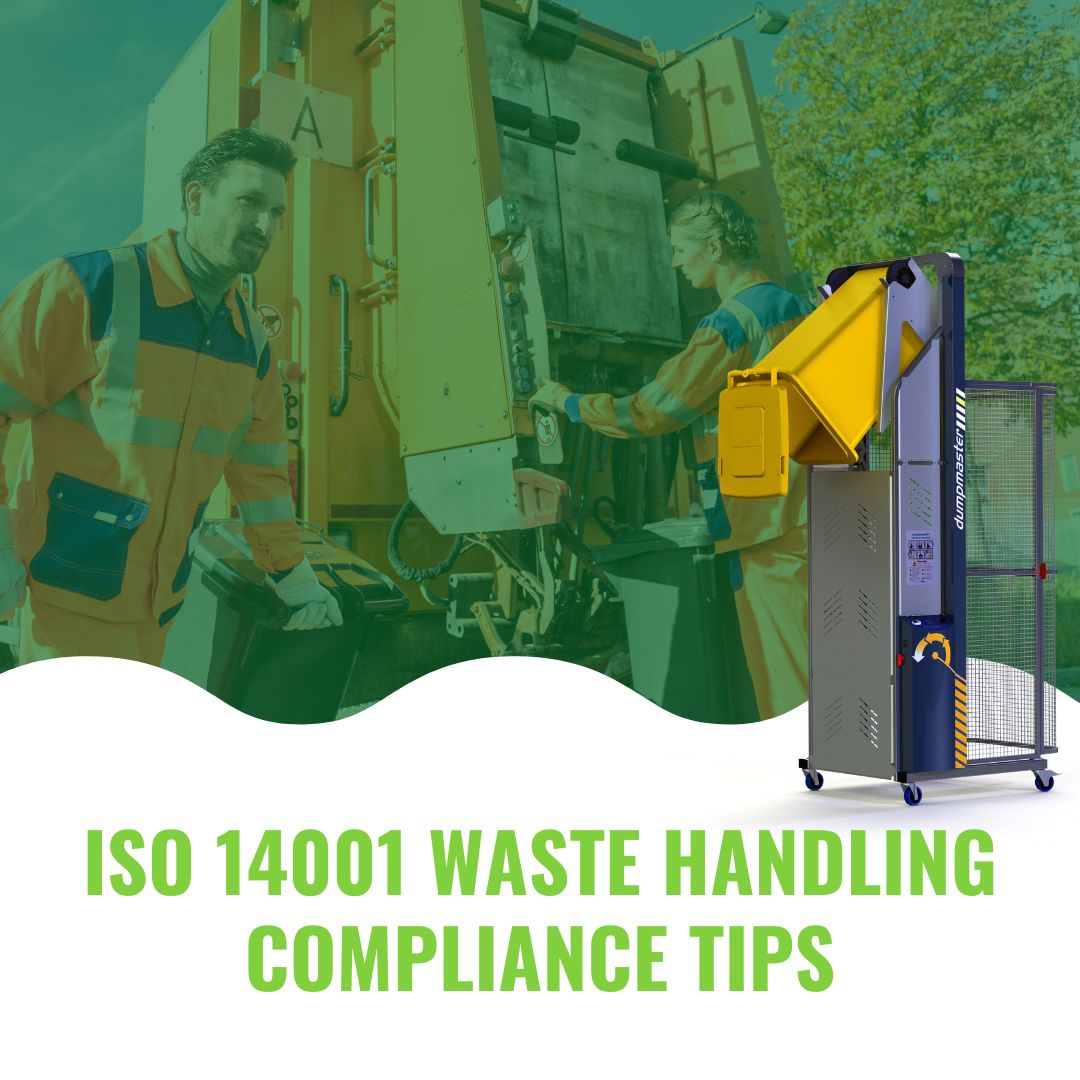We use cookies to make your experience better. To comply with the new e-Privacy directive, we need to ask for your consent to set the cookies. Learn more.
ISO 14001 Waste Handling Compliance Tips
The international standard ISO 14001 describes an ideal environmental management system, including a sustainable approach to waste handling. The standard is designed to help “organizations improve their environmental performance through more efficient use of resources and reduction of waste,” according to the International Organization for Standardization’s introductory guide — and waste management is key to reducing waste and using resources efficiently.

But full ISO 14001 certification isn’t easy to obtain. First of all, you’ll need access to the standard itself, which you have to purchase from ISO’s web store. Next, you’ll need to find a third-party certification agency — ISO doesn’t offer certification or accreditation, though it does allow external certification companies to do so. And, of course, you’ll have to build the new environmental management system itself. Before you start, it’s important to understand that ISO 14001 compliance usually entails vast systemic change. It describes an entire environmental management system, and altering workflow from the top down is never cheap.
That said, ISO 14001 has plenty to teach us about waste management, whether you proceed to full compliance and certification or not. Here are a few ideas from the ISO 14001:2015 standard that can help any waste management program contribute to sustainability goals:
1. Train staff to understand your area’s waste management laws.
Meet all “compliance obligations,” says ISO 14001: 2015, referring to both environmental laws and regulations as well as contractual agreements, stated commitments, and community codes of practice.
But it’s not enough for management teams to understand their compliance obligations. The whole team needs to be on board, and that means providing full, clear context about how your waste-handling practices contribute to compliance with environmental laws and the company’s ideals. In short, there’s no substitute for ongoing training programs.
2. Plan for environmental emergencies, including spills and leaks.
See section 8.2 of ISO 14001: 2015 for full guidance on “emergency preparedness and response.” But be sure to start by teaching employees how to handle waste spills. Provide appropriate containment and clean-up equipment in all areas that house environmentally hazardous chemicals, oils, acids, and other materials.
Spill Response Kits and Supplies should be designed for the substance the facilities handles. That may mean acid-neutralizing sorbents and containment socks; general purpose granular sorbents for oils and chemicals; or even solidifiers designed to absorb animal fluids (as in food-processing applications).
3. Support staff during transition to ISO 14001-compliant waste handling strategies.
Chapter 7 of ISO 14001: 2015 discusses the support required to put environmental policies to work at the ground level. That includes providing staff with the resources they need to succeed. If you’re splitting your waste into multiple streams (e.g., recycling, composting, and landfill), front-line employees will have to work harder to handle the same volume of materials.
Ease the burden by providing ergonomic waste-handling equipment and color-coded bins for each waste stream. The fact is, lifting and emptying bins requires several of the motions that the Occupational Safety and Health Administration (OSHA) identifies as risky: lifting heavy loads, awkward postures, and twisting the torso, just to name a few.
Bin Dumpers from Solus Group eliminate the risk. They lift and tip fully loaded bins at the press of a button, and they allow a single employee to handle waste bins that used to take a whole team. Larger facilities or campuses may require a Turnkey Waste Handling Solution, which uses a tugger train and a rolling Bin Dumper to let one worker remove materials from multiple collection points.
While these tips won’t provide full, immediate compliance with ISO 14001, they will help organizations of any size move further in the right direction. To learn more about ISO 14001 and the whole family of Environment Management Systems Standards from ISO, click here. For more information about how Solus Group’s products can help with ISO 14001 waste handling compliance and other waste management challenges, call us at (314) 696-0200.
